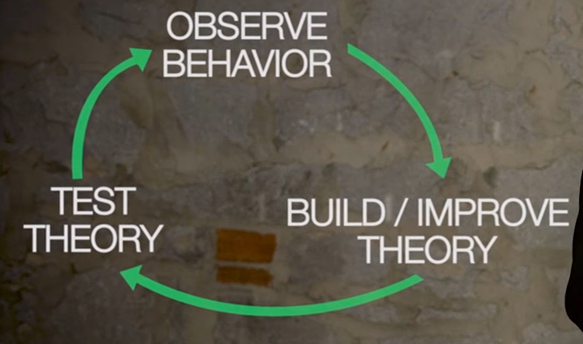
The Systems Thinking Trinity
Two weeks ago, we watched “The Value of Systems Thinking” by consultant Chris Soderquist for the CDC, and I pointed out how you can view the quadrant of “High Leverage” as a [3] David’s Bow — that by turning the diagram on an angle, you could use it as a way of aiming your thinking and efforts accurately.
I’d like to revisit this video again, this time paying special attention to something that fits [3] The Trinity systems shape. I’ve queued the video to the right time below:
In the video, Soderquist breaks Systems Thinking into three basic components:

What you are doing
Frame the problem with as expansive a set of boundaries as possible

How you are doing it
Understand how things work
Developing and picture of the physics
Developing a shared picture / model
Scientific Method

How do you know you’ve done it well
You arrive at an understanding that is:
* simple
* easily understandable
* easy to explain1
One of the great powers of system thinking is the ability to recognize recursion. Recursion is the repetition of a similar pattern at different scales. Picture it this way: image the vein structure on the back of a tree leaf. This same pattern of branches is also present in the entire tree. Both are created by a relational geometry know as a branching L-system: a system of relationships that emerges very frequently in nature.
There’s a recursion in this video. While explaining the larger trinity of system thinking components, Soderquist mentions the scientific method in the second component. Notice that this method follows the same geometry of “becoming less and less wrong” as the over-all process itself.


Observe Behavior

Build / Improve Theory

Test Theory
By recognizing the recursion, users of this model of system thinking can simplify and reinforce the process using the power of pattern. For example, it’s easier to remember things that are closely related, especially if we remember them spatially — according to their place in a system (see a video of Ricardo Lieuw using spatial memory on the body to do this2). Think about the game Memory, where cards are arranged face down in a grid pattern, then turned over two-at-a-time to find matches. It’s much easier to play the game if the cards are in a regular pattern of short rows. Longer rows represent more of a challenge since the pattern is more complex. If the cards are randomly distributed, remembering cards between turns becomes especially difficult.
If people have to memorize a model, a process, or a set of values for every individual task or system they use, they’ll quickly confuse and forget the details of all but a few of them. However, if they use a pattern, especially a recursive one based on spatial memory, they’ll be able to remember just a few rough “shapes” of how a process should go and use that to remember or re-design a process or set of values with a high rate of accuracy any time they need it. Memory power through patterns of recursion is only one benefit of this type of systems thinking, though an important one.
Building Our Own Model
Over the next several weeks, I’d like for us (our family/community) to build our own systems thinking model and apply it to several problems that have presented themselves. The problems I suggest are:
- The drudgery and conflict of our family’s chore system.
- The level of distraction and irregularity in our family schedule/schooling system.
- A brand new design for how we will manage and support the SparkQuest community.
Here’s how I’d lay out my particular approach to systems thinking for these problems:

Plan
Analyze the situation and make a plan.

Execute
Do the plan, improving as you go.

Deploy
Deploy your solution for the most good.
Let’s start with the first step. We’ll practice making a plan in the three areas I mentioned previously. Soderquist gives the advice to “Frame the problem with as expansive a set of boundaries as possible”. We’ll do this by applying Rule One of systems thinking:

Plan
Analyze the situation and make a plan.
Rule One: Systems should be understood and managed from the greatest purpose and highest unity possible.
Read the Codex entry on At Least Three Whys and write your thoughts in the comments about the principles we’re talking about and how we might apply them to systems in our life.
Meta
Feature Image: Sample fractal image generated by the Electric Sheep, posted by Überraschungsbilder, CC by 2.0.
References & Notes
- Another way of saying this: “You’ve made useful sense of your reality by reducing the complexity of your understanding.” (t=5:30)
- Notice in Ricardo Lieuw’s video “How to triple your memory by using this trick” that he also uses a trinity-shaped process: The check, The experience, The experiment




Cool, I’ll try it for my writing.
ok